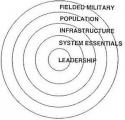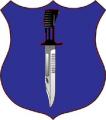I think tilt rotor technology has promise. Remember Operation Rhino? The raid force from 3d Ranger Battalion was inserted by parachute and withdrawn by helicopter. That works but it's an extra link in the plan.
With tilt rotors the drop aircraft could also be the extraction aircraft for parachute raids. At least sometimes. I know it's not the answer for every situation but it has application for some.








Bookmarks